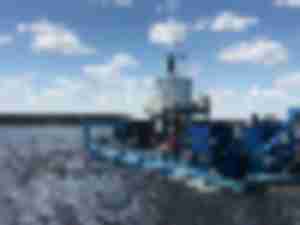Celico delivers masterclass in US-China trade relations at CONECT Conference
Amy Celico, principal at the Albright Stonebridge Group [part of Dentons Global Advisors] was a featured speaker at the annual CONECT (Coalition of New England Companies for Trade) Trade & Transportation Conference in Newport, Rhode Island April 11-13, 2023.
Proposed national maritime strategy will support U.S. maritime growth
The DOT’s U.S. Maritime Administration (MARAD) is now authorized to produce a National Maritime Strategy that would provide the basis for the United States to assess maritime shortfalls and address them through greater investment and/or policy changes, according to Sara Fuentes, Vice President of Government Affairs, Transportation Institute and Jonathan Kaskin, National Vice President for Legislative Affairs, Navy League of the United States.
Cyber vulnerabilities—a top supply-chain risk
Reducing attack surface is key to shoring up security, expert says...
Crowley spearheads offshore wind operations at Humboldt Bay
Last November, Andreini spoke to AJOT and described the scope of the wind farm effort at Humboldt Bay: “I do not think that many people…
After Oakland A’s Fisher bombs in Oakland, he heads for the showers in Las Vegas
Oakland A’s owner John Fisher surprised the City of Oakland with the baseball team’s announcement that it had a ‘land deal’...
Japan and California ports will collaborate on green shipping and hydrogen fuel projects
On March 15th, California and Japan signed an agreement to develop a “green shipping” corridor. In addition, California and Japan will collaborate on the deployment of zero emission hydrogen projects at California ports, according to Danny Wan, Executive Director, Port of Oakland.
California offshore wind farms will create massive new economic development at ports
The State of California proposes to build 25 gigawatts of offshore wind energy by 2045 requiring nearly 1,700 new wind turbines, built at a rate of 92 floating turbines per year, and the Humboldt Bay Harbor District in Northern California wants to be the manufacturing center.
Port of Los Angeles Director Seroka urges West Coast labor contract
Port of Los Angeles Executive Director Gene Seroka argued for a “crucial” West Coast labor contract while describing last week’s longshore shutdown of the Ports of Los Angeles and Long Beach as a “pause.”
The Benefits of Water Injection Dredging for U.S. Ports
HDR Senior Dredging Engineer Joe Wagner, P.E., D.NE, BCEE, explains the technique, how to determine whether it’s a good fit for a port and shares examples from where it’s been used.
Can a book written about the 1960s negotiations offer a path to a new ILWU-PMA agreement?
In 2023, resistance to automation is a factor delaying a new contract between the International Longshore and Warehouse Union (ILWU) and the Pacific Maritime Association (PMA). It is instructive to recall that back in 1960 the ILWU, under its founding President Harry Bridges, helped trail-blaze mechanization (and containerization) at U.S. West Coast ports.
© Copyright 1999–2025 American Journal of Transportation. All Rights Reserved











